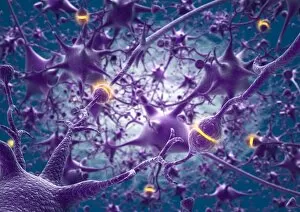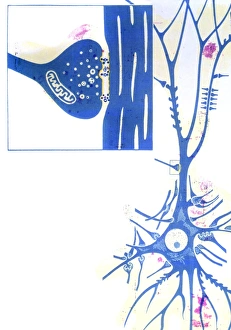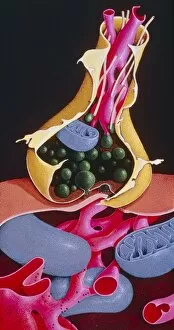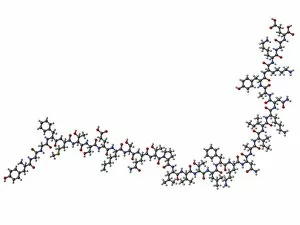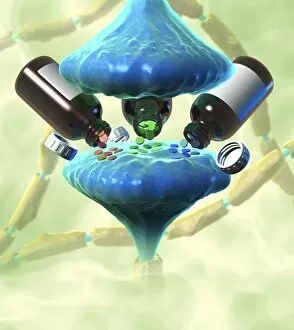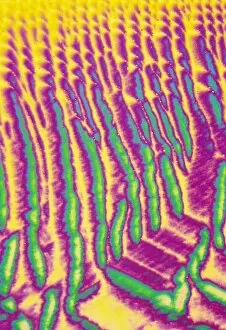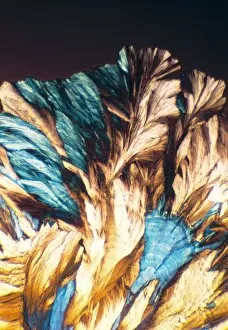Neurotransmitter Collection (#3)
"Exploring the Intricacies of Neurotransmitters
All Professionally Made to Order for Quick Shipping
"Exploring the Intricacies of Neurotransmitters: Unveiling the Secrets of Brain Protein Research" The fascinating world of neurotransmitters unravels as scientists delve into brain protein research, seeking to understand the complex mechanisms that govern our thoughts and emotions. Intriguingly, cannabinoid receptor binding emerges as a crucial aspect in this intricate web. Artwork depicting these receptors highlights their role in modulating various physiological processes within our brains. As we journey deeper into the realm of neuroscience, we encounter schizophrenia—a disorder shrouded in mystery. Researchers tirelessly investigate how neurotransmitters contribute to its development and progression, hoping to unlock new treatment avenues for those affected. Amongst these chemical messengers lies oxytocin, known as the "love hormone. " Its unique structure is captured beautifully as a molecule, emphasizing its vital role in social bonding and trust. Nerve synapses become our next stop on this captivating voyage. Through TEM images, we witness the astonishing intricacy with which neurons communicate through electrical impulses and neurotransmitter release—bridging gaps between cells with astonishing precision. Serotonin takes center stage—an influential neurotransmitter responsible for regulating mood and sleep patterns. Visualizing it at a molecular level helps us appreciate its significance in maintaining emotional well-being. Enkephalin crystals shimmer under light micrographs—an opioid peptide offering insights into pain management strategies. Understanding their structures allows researchers to develop novel therapies targeting pain pathways effectively. Delving further into neurochemistry brings us face-to-face with ecstasy's impact on brain function—a topic both intriguing and concerning simultaneously. Scientists strive to comprehend how this recreational drug affects neurotransmission patterns while considering potential long-term consequences. Dopamine receptor D3 C016/4464 captures attention—a key player implicated in reward-motivated behavior and addiction disorders. Studying its structure provides valuable clues towards developing targeted interventions for substance abuse issues plaguing society today.



